See who made this BRL (Brisbane Rugby League) team of the 1970s
See who made this BRL (Brisbane Rugby League) team of the 1970s and read the expert comments on each player from one of Queensland’s best from that era, former Australian and Brothers forward David Wright. What do you think of this team?
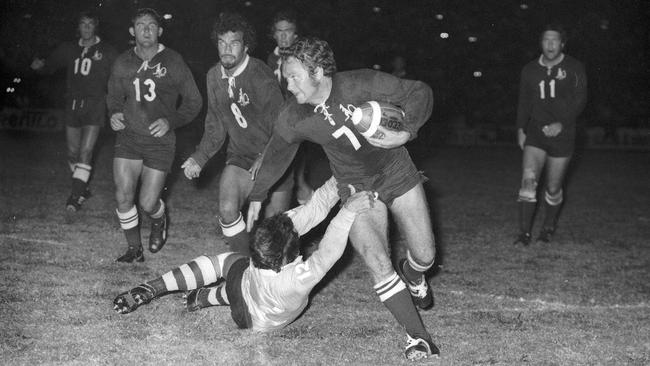
Local
Don't miss out on the headlines from Local. Followed categories will be added to My News.
At a time when NRL players face pay-cuts, Andrew Dawson names his Brisbane Rugby League team of the 1970s, an era when players played the game for love, trained just two nights a week and had full-time jobs.
It may surprise people aged under 50 to know that long before the Brisbane Broncos (1988) entered the NRL competition, there was a thriving Brisbane Rugby League competition.
The eight team competition was complete with great players, characters and moments to cherish.
BEST ALL-TIME REDCLIFFE DOLPHINS PLAYERS
BEST EVER WYNNUM-MANLY SEAGULLS PLAYERS
Here is a look back at the finest players from the eight clubs, Redcliffe, Wynnum-Manly, Easts, Norths, Souths, Wests, Brothers and Fortitude Valleys, culminating in the naming of the BRL team of the 1970s.
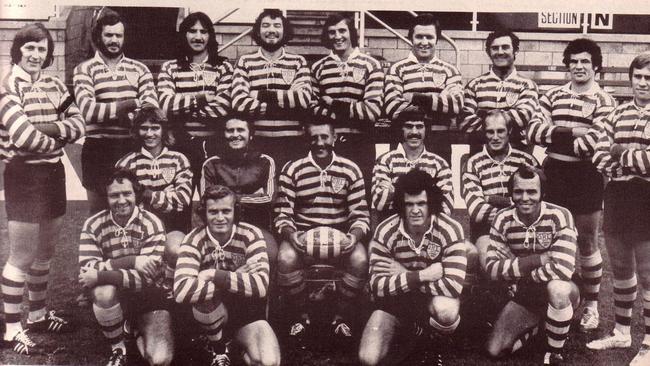
Former Australian, Queensland and Brothers forward David Wright passes comment on those players named by Dawson in this side.
Get 28 days digital access free (T&Cs apply)
Three Redcliffe legends would be certain selections in most people’s BRL team of the 1970s.
Ian “Bunny Pearce” and the late Dayboro farmer Peter Leis would walk into the side, while 1981 Redcliffe grand final halfback Greg Oliphant would easily make it onto the reserves bench.
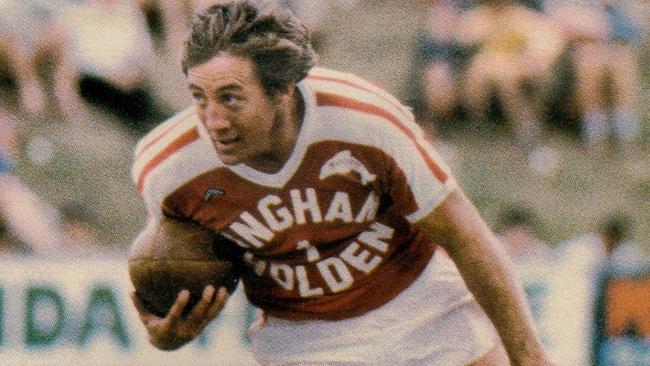
And many other of the Dolphins’ finest would push hard for a place.
Ian Thinee, Forrester Grayson Grayson, Bevan Bleakley, Steve Williams, Bob Jones, John Barber, Steve Bullow and Tony Obst, to name a few, were among the most respected footballers doing the rounds in the 1970s while playing with the powerful Redcliffe club.
And there was no quicker footballer in the 1970s then beach sprint champion Brian Gardner who scorched down many wings for the Dolphins.
But in a golden era of Brisbane rugby league, fullback Pearce and centre Leis, were best in their positions.
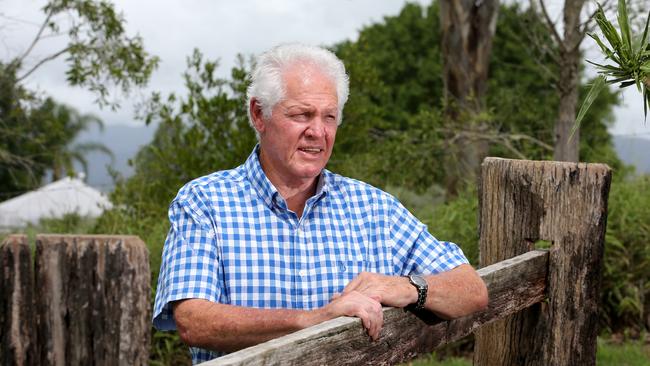
Both were country boys, but when it came to rugby league they were Redcliffe through and through.
Wright played against all the great Dolphins of that era and said of Pearce: “He was a lovely, lovely, lovely bloke. One of the nicest people you could ever meet. One of nature’s gentleman.’’
But what about as a footballer? “He was the most unlikely looking footballer, but the most effective,’’ Wright explained.
“When Bunny went to kick he’d throw the ball in the air and somehow it would hit his boot. “When goalkicking he’d lean back (instead of head over the ball), but it would still go through the posts.
“In the end it was all about getting the result, which he did.’’
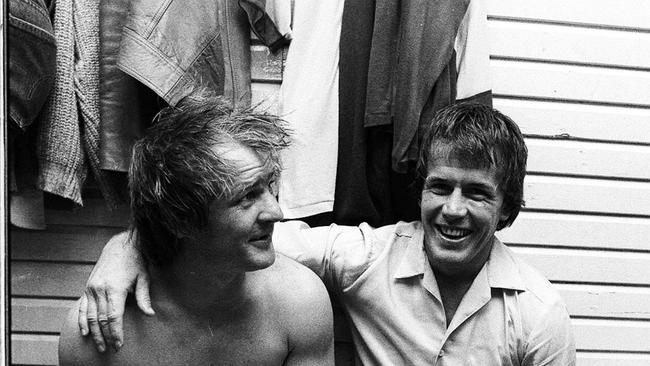
Wright described Leis as a “strong, competitive, tough opponent’’.
“He was strong in running, strong in defence. He was not bestowed with best skills, but he was hard to beat in the contest.’’
Wright said Oliphant was “ one of the players I admire the most because his skill level was not as high, but his determination was higher than most’’.
“He was not a quick halfback, but he was fast between the ears. That is Ollie to tee.
“He played above his skill level and played for Australia. He never let you down.’’

The mighty Easts’ Tigers had three players, brothers Des and Rod Morris and hooker John Lang, who would walk into the side.
And a fourth, firebrand John Payne who represented his county from Easts in between stints with North Sydney and Norths Brisbane, would sneak onto the reserves bench.
The most unlucky omission from the Tigers’ den would be winger Jeff Denman in a decade when Easts won premierships in 1972, 1977 and 1978.

Halfback Wayne Lindenberg was an electric running halfback who played for Queensland in the late 1970s, although his career also stretched into the 1980s where he won a premiership and again represented Queensland (1983).
Exciting fullback Roger “The Dodger” Kuhn could sidestep quicker than you could say Langlands Park.
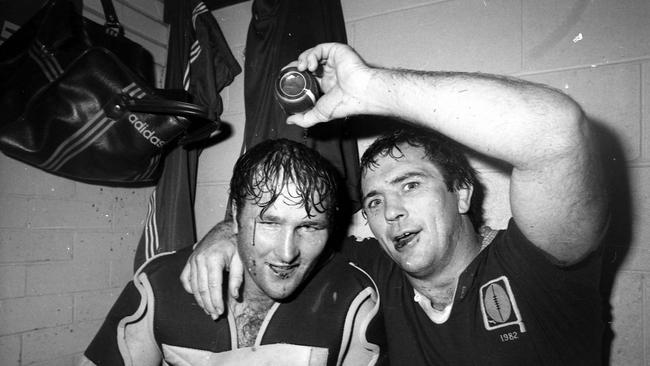
Flying winger John Kallus represented Queensland, lock Allan Currie was a Rothman’s medallist while Jeff Fyfe was a premiership winning hero.
But three Easts legends stand atop the pile – Lang and the Morris boys.
Lang was so good, he represented New South Wales (residents), Queensland (State of Origin) and Australia in his farewell season of 1980.
Wright said Lang was also a “great, great teammate’’.
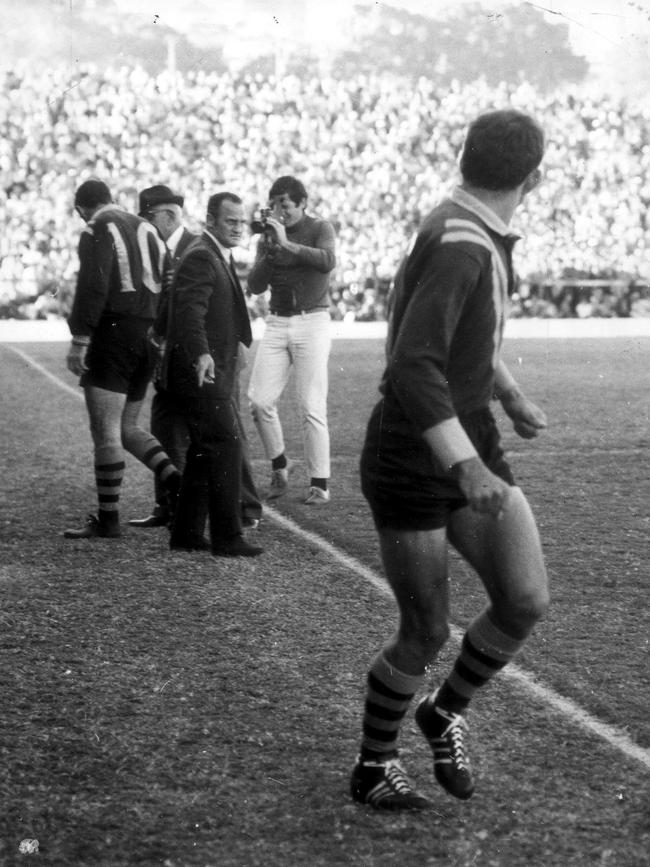
“I have huge admiration for him. He was the best striker when hookers were hookers.
“Langy was a rake, he hooked the ball back and he always wanted his scrum packed the right way and he would get upset if that did not happen.
“He also ran out of dummy half, but only when he saw an opportunity.’’
Tiger great Des Morris is arguably Queensland’s finest forward never to play for Australia, most probably robbed by a medical examination that indicated he had a heart murmur.
“He was good enough (to play for Australia), no doubt,’’ Wright said.
“He was a hard defender and a big striding backrower. And he had a bit of pace about him. In that era he was the best player not to play for Australia through no fault of his own.’’
Morris’ brother Rod, a front rower, made up for his brothers’ non-selection with 16 Test appearances.
He also played 10 games for Queensland (including four Origins) and six times for New South Wales.
He was one of the favourite players of respected retired journalist Tony Durkin who believed Morris put the steel into the Queensland pack during the Maroons early success in State of Origin (1980-1982).
“He never got the early rep honours that his brother Des did, but Rod maximised what he had to be a bloody good tight head front rower of his era,’’ Wright said.
“He did the hard yards. He was a trench player.’’

Payne was not a pure Tigers’ man in that he was a Valleys junior who also played for North Sydney and Norths Brisbane.
But he represented Australia from Easts Brisbane and Wright said of his old mate: “He was very effective when he came back from Sydney. He played without fear and never gave a rats about those Sydney blokes. He was not afraid of any of them.’’
DAVID WRIGHT PENS CORONAVIRUS CALL TO ARMS
Two Wynnum-Manly legends, winger Warren Orr and second rower Lew Platz, would make the BRL 70s’ squad.
Wright said Orr was one of the most majestic wingers you could lay eyes on.
“He is one of the best wingers from that era and more broadly in my time watching the game,’’ said Wright, who for decades was also a rugby league commentator.
“Warren was a magnificent athlete who could use a touch line better than most.
“He was lovely to see, but not if you were in the opposition.
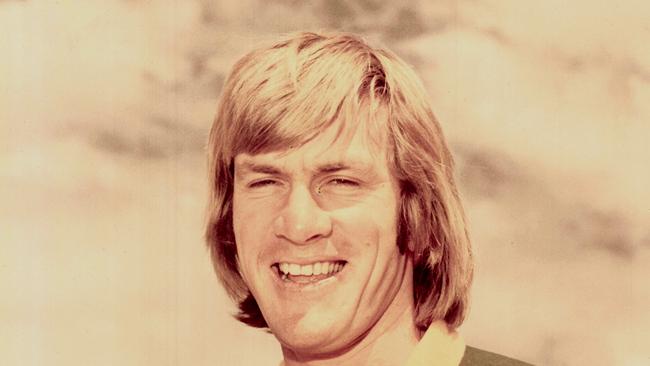
“To see him in full stride … he was a special athlete.
“He was extremely well balanced and while not as robust as Eric Grothe (Parramatta great from the 1980s), he had that beautiful action in running.’’
Wright also played alongside the long-striding Platz for both Queensland and Australia.
“He was a very athletic player and awkward to get hold of,’’ Wright recalled about the second rower.
“He was dangerous and a bit like the modern day edge back rower of today.
“I got a ball on halfway in a Test against New Zealand and Lew came up in support and he ran 50m to score untouched.
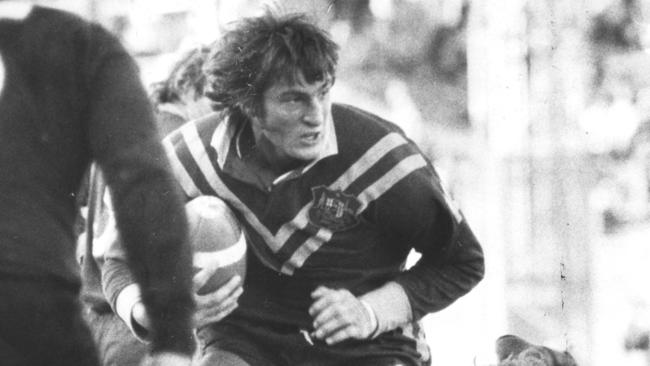
“He could read the play. He was good at timing his run. That is a memory I will not forget. “All you had to do after that was put your hands on your hips and watch him run. And hasn’t aged a bit 50 years.’’
Another Seagulls player extremely close to selection was centre John Rhodes, a Wests Mitchelton junior who was picked up by Canterbury-Bankstown before returning to Brisbane to play with Wynnum and finally Valleys.
Rhodes was blessed with extreme pace who represented Australia from Wynnum in 1975.

The mighty Souths would supply the captain, front rower Greg Veivers, who Wright said was an amazing leader.
“He was the best leader for that era that you can imagine,’’ Wright said. “He captained Queensland and Australia.
“The bigger the game, the better he went. He had that other gear.
“When we played New South Wales he had no fear.
“He took them on and said to us, “come on boys’’.
“You had to follow his lead, that is how inspirational he was. He was a really tough, powerful player.’’
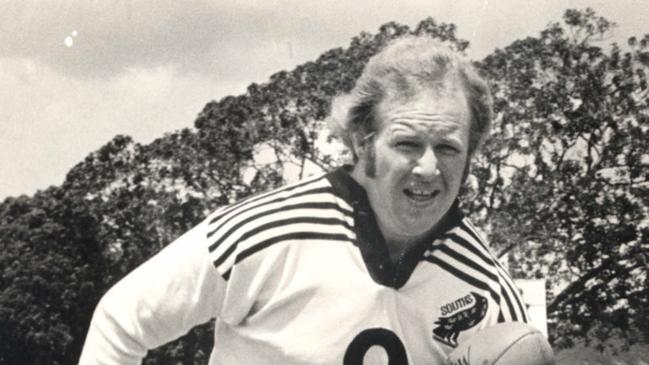
The second Souths player into the 70s’ team is outside back John Grant.
Grant is better known to modern followers of the code as the former ARL chairman, but in his playing days he was an outstanding player in an era when Souths were not overly strong.
Grant, a winger or centre, had pace to burn and was good enough to represent Australia.
Wright said Grant was a “very good runner, evasive, had a strong fend and swerve’’.

“He was a great ball runner and good defensively as well,’’ Wright said.
“He came from an Aussie rules background and was the Queensland Player of the Year in 1972.
“He became the first Queenslander of his era who went to Warrington (England) and I was the second.’’
Souths’ great Bruce Astill, a champion centre who moved to lock late in his career, also snuck into the squad despite his career straddling either side of the 1970s and 1980s.
Two of his great milestones were being selected in Queensland’s first ever State of Origin squad (1980) and captaining the Magpies to the 1981 premiership.
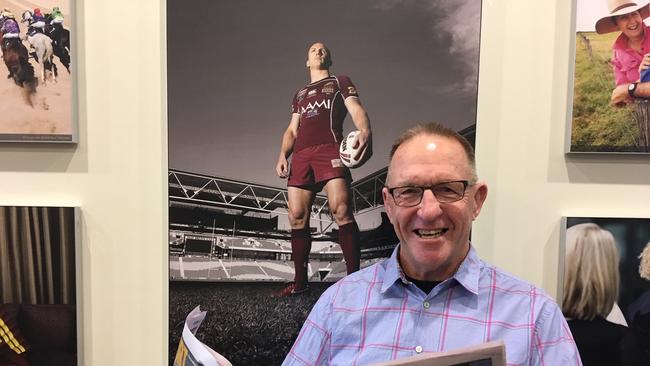
But through the late 1970s he was the leader of a resurgent Magpies who surprised many to make the 1979 grand final.
His centre partner at Souths, the immortal Mal Meninga, once said of Astill: “ His work ethic was incredible and I was in awe of his passion for the club, which probably goes back to his father Jack, who was president of Souths juniors.’’
The popular Wests’ Panthers had a cult following and with good reason after winning premierships in 1976 and 1975.
Brilliant fly half Geoff Richardson led the way, while Orr and Oliphant were in this crack squad at stages in the 1970s.
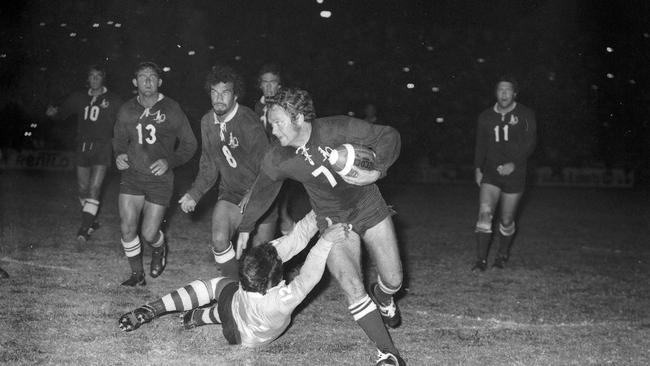
Aside from that trio, other elite Panthers like Ian Robson, Richie Twist, Greg McCarthy, Wayne Stewart and Harry Cameron were considered for the BRL team of the 1970s.
Cover defending lock Norm Carr was among the most unlucky of omissions, although he played plenty of football in the 1980s as well.
Wright said dual international Richardson was a sensational pivot.
“Richo was as smooth as silk,’’ Wright said.
“He was cool and smooth, an in command player.
“I remember at Queensland training one day someone threw him a pass that he did not deserve to get a boot on.
“But he dived forward, caught the ball and in the same motion and flicked it up to the centre outside. He never missed a beat.’’
Wests also had another Australian five-eight in the late 1970s, Steve Crear, while Wayne Carr, the brother of champion lock Norm, also played for the maroons.
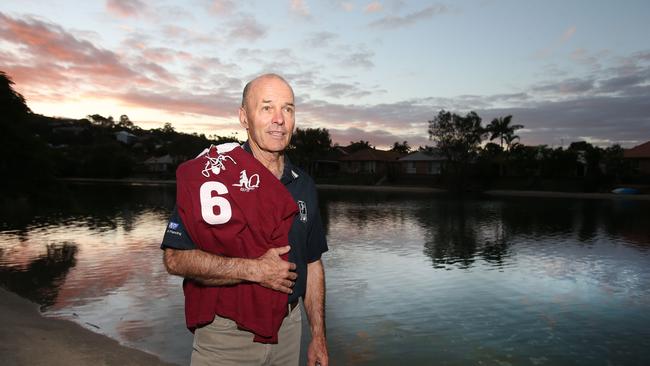
Two of the BRL’s most famous clubs, Brothers and Fortitude Valley, live on through their juniors.
But in the 1970s, both were strong BRL sides.
Valleys, in particular, were a gun outfit that was steered around by halfback Ross Strudwick.
“Struddy was an ultimate competitor,’’ Wright said.
“He was very competitive who could get his team around the park.
“He was a game manager – he was doing it before it became a popular term in the modern game.
“And he took that strong style into his coaching. He was a very innovative coach, but as a player, he was very competitive.’’
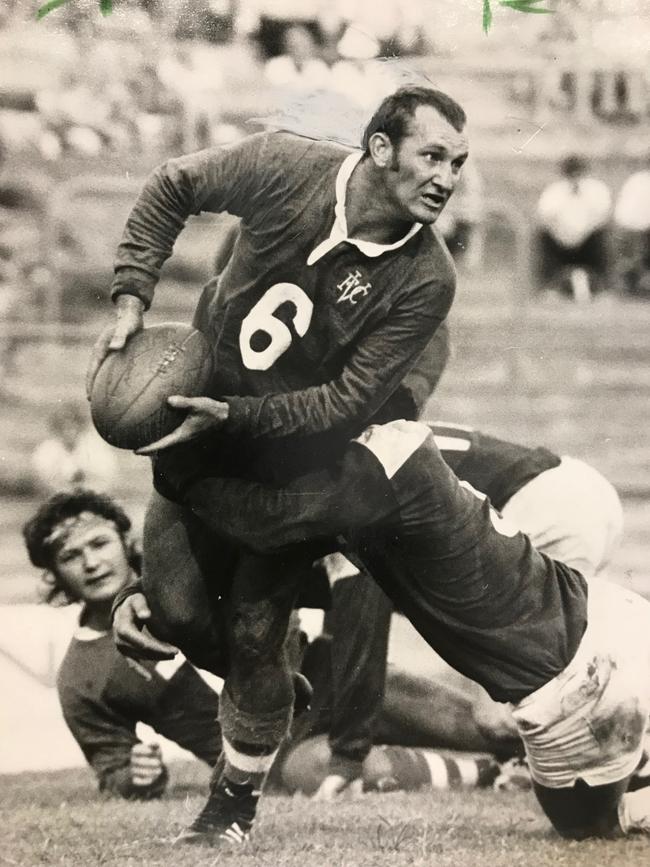
Strudwick would start at halfback while his teammate. Gerry Fitzpatrick would be centre and two other Diehards, John McCabe and Marty Scanlan, would make the reserves bench.
“Long John (McCabe) was a lanky, awkward, gangly player, all elbows and knees,’’ Wright recalled.
“He was a very tall, an awkward player to tackle and not a good one to be tackled by. He was a very good player of that era.’’
Wright said Scanlan was an outstanding player of that era.
“One of the best competitors you’d come across. He was strong, hard working and could break the line and put the defence on the back foot.’’
Wright also had a fondness for centre Fitzpatrick.
“He was an amazing guy and he never stopped going,’’ Wright said.
“He must have had the best sweat glads because he’d only have to do a lap of the oval at training and it looked like he needed a shower.
“He was never out of position, he kept working and had an ability to beat a guy on the outside. He was once the Queensland player of the year.
“Gerry was not a big man, but was wiry and deceptively strong.’’
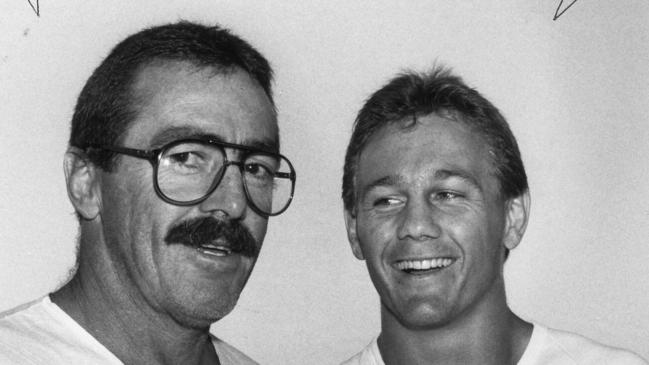
Wright’s famous Brothers club would be represented by himself in the second rower, and champion lock Col Weiss.
“He was the fittest bloke for his era,’’ Wright said of Weiss.
“I remember a photo of him lifting timber fencing as his weights and doing bench presses above his head.
“We did some weights in those days, but he was very strong and in terms of fitness.
“He was a man off the land and in a fitness sense he was ahead of his time and that gave him the opportunity to maximise his ability.’’
Wright would be the BRL team of the 1970s vice-captain.

A prop or second rower from the Wavell State High School community, Wright was a fixture in Barry Muir’s Queensland team’s that took NSW to the brink with the odd win, some draws and narrow losses.
He was also good enough to represent Australia in 1975, but unfortunately tore his hamstring in his debut.
But one of the highlights of Wright’s life was playing with Warrington in 1973-74 during the BRL off-season, which included winning the Challenge Cup final.
“It was the most amazing experience that I have never forgotten,’’ Wright said.
“We played under the great Alex Murphy. We won everything and I came back with three medals.’’
Other Brothers players like Graham Quinn and Mark Thomas, both Australian centres, Len Dittmer, Wayne Abdy and Bob Cock were considered.
Norths’ Devils have a long and treasured history and although the 1970s was a flat period in the club’s history in terms of premierships, Norths still provided three Rothman’s Medals winners – Steve Calder, Darryl Brohman and Neville Draper while John Payne was a fearsome presence.
The late 1970s also saw the emergence of Mark Murray who went on to a memorable career in the 1980s at both club and representative level, while hooker Nick Geiger represented both Queensland and Australia in 1977 in the absence of an injured John Lang.
By the late 70s, Norths - with a young captain Mark Murray, a New Zealand coach Graham Lowe and a champion Kiwi Mark Graham - were brewing toward an upset premiership win in 1980, but more to come on that next week.
FOR MORE LOCAL NEWS, CLICK HERE
Coach of the team would be the motivational Barry Muir, a champion halfback in his playing days and later a grand coach who oversaw Wests, Queensland and Redcliffe.
“He got us to compete and play, he was inspirational,’’ said Wright, who was coached by Muir when playing for Queensland.
“If you heard his speech and after that you couldn’t play, then you couldn’t play.
“He had us primed and ready to play which was perfect for rep footie.’’
My BRL team of the 1970s is
Fullback: Bunny Pearce (Redcliffe)
Wing: John Grant (Souths)
Centre: Peter Leis (Redcliffe)
Centre: Gerry Fitzpatrick (Valleys)
Wing: Warren Orr (Wynnum-Manly and /Wests)
Five-eight: Geoff Richardson (Wests)
Halfback: Ross Strudwick (Valleys)
Lock: Col Weiss (Brothers)
Second row: David Wright (Brothers, vice-captain)
Second row: Des Morris (Easts)
Prop: Rod Morris (Easts)
Hooker: John Lang (Easts)
Prop: Greg Veivers (Souths, captain)
Reserves:
Lew Platz (Wynnum-Manly)
John McCabe (Valleys)
John Payne (Easts, Norths)
Greg Oliphant (Wests, Redcliffe)
Marty Scanlan (Valley)
Bruce Astill (Souths)
Coach: Barry Muir


